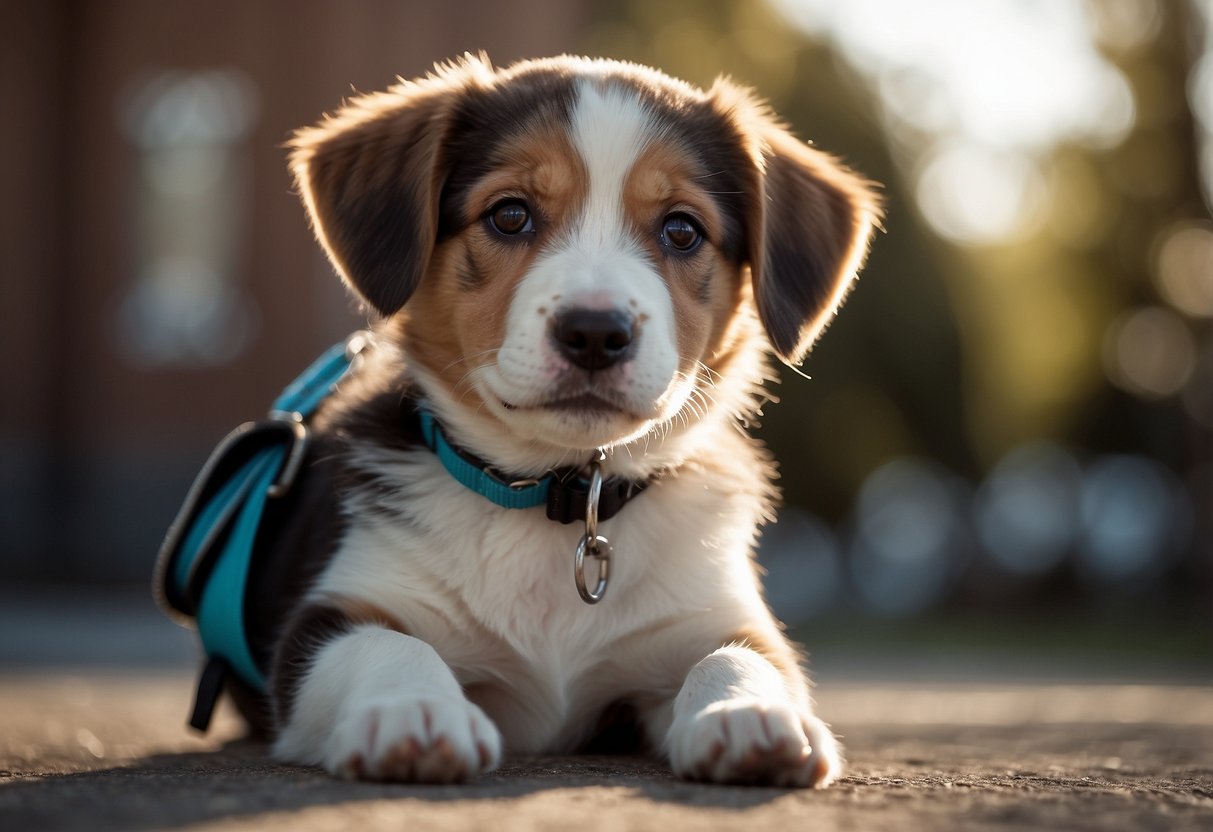
House Training Basics
Consistency and patience play a vital role in house training a puppy. It is important to establish a routine, manage accidents calmly, and use crate training effectively.
Establishing a Potty Routine
Developing a regular potty routine helps your puppy learn when and where to relieve themselves. Choose specific times for bathroom breaks, such as after meals, naps, and playtime. Taking your puppy to the same spot can reinforce this habit.
Puppies have small bladders and need frequent breaks. As they grow, they will gradually need fewer trips outside. Keep an eye on signs like sniffing around, circling, or whining, which may indicate they need to go out.
Using verbal cues can be beneficial. A simple phrase like “go potty” can signal to your puppy what is expected. Praise and reward them immediately after they finish, reinforcing the positive behavior.
Managing Accidents
Accidents are a normal part of house training. Responding calmly without punishment is crucial. Punishing a puppy for accidents can create fear and confusion. Instead, clean the area thoroughly to remove any lingering scent.
To minimize accidents, limit your puppy’s access to rooms where accidents have occurred. Supervise them until they fully grasp the potty routine. If you catch your puppy in the act, interrupt with a gentle clap and take them outside immediately.
Use enzymatic cleaners to neutralize odors. Standard cleaning products may not completely eliminate the smell, encouraging repeat accidents in the same area. Regularly cleaning and maintaining areas helps in teaching proper habits.
Crate Training
Crate training can be an effective tool for house training. A crate offers a safe, den-like environment for your puppy, helping to prevent accidents. Puppies instinctively avoid soiling their sleeping area, making the crate a useful potty training aid.
Introduce the crate gradually. Make it a positive space by placing toys and treats inside. Start with short periods and slowly increase the time your puppy spends in the crate. Ensure the crate is appropriately sized; too much space can lead to accidents.
During crate training, take your puppy outside for bathroom breaks regularly. Crating your puppy for extended periods without breaks should be avoided, as it can be stressful and counterproductive.
Socialization and Exposure
Introducing a puppy to various people, pets, and environments is crucial for its development. It ensures the puppy grows into a well-adjusted dog, confident in new situations.
Introducing New People and Pets
Begin by introducing the puppy to a few calm and friendly individuals. It’s best if these people are of different ages and appearances to help the puppy become comfortable around diverse humans. Arrange these meetings in a controlled environment to prevent overwhelming the puppy.
After a few successful encounters, progressively introduce the puppy to other pets. Start with pets known to be friendly and patient. Keep initial meetings brief and positive, rewarding calm behavior with treats or praise. Supervise these interactions to ensure safety for both the puppy and the other pets.
Timing and consistency are crucial. Regular socialization sessions, ideally daily, will reinforce the puppy’s positive experiences. Early and varied social interactions help in developing a well-adapted adult dog.
Handling and Habituation
Handling exercises help the puppy get accustomed to being touched and handled by humans, essential for future grooming and vet visits. Begin by gently stroking the puppy’s body, including sensitive areas like paws, ears, and mouth. Gradually extend the duration of these sessions.
Simulate typical scenarios like brushing, nail trimming, and ear cleaning. Use treats to create positive associations. Also, expose the puppy to different environments, such as parks, streets, and vehicles, to build their confidence in varied settings.
Frequent and gentle handling paired with positive reinforcement will make these experiences less stressful as the puppy grows. Regular exposure to new situations promotes a well-rounded and adaptable pet.



